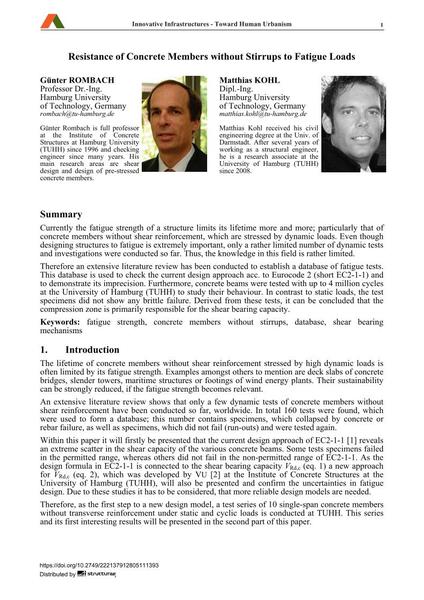Resistance of Concrete Members without Stirrups to Fatigue Loads

|
|
|||||||||||
Bibliografische Angaben
| Autor(en): |
Günter Rombach
Matthias Kohl |
||||
|---|---|---|---|---|---|
| Medium: | Tagungsbeitrag | ||||
| Sprache(n): | Englisch | ||||
| Tagung: | 18th IABSE Congress: Innovative Infrastructures – Towards Human Urbanism, Seoul, Korea, 19-21 September 2012 | ||||
| Veröffentlicht in: | IABSE Congress Seoul 2012 | ||||
|
|||||
| Seite(n): | 919-926 | ||||
| Anzahl der Seiten (im PDF): | 8 | ||||
| DOI: | 10.2749/222137912805111393 | ||||
| Abstrakt: |
Currently the fatigue strength of a structure limits its lifetime more and more; particularly that of concrete members without shear reinforcement, which are stressed by dynamic loads. Even though designing structures to fatigue is extremely important, only a rather limited number of dynamic tests and investigations were conducted so far. Thus, the knowledge in this field is rather limited. Therefore an extensive literature review has been conducted to establish a database of fatigue tests. This database is used to check the current design approach acc. to Eurocode 2 (short EC2-1-1) and to demonstrate its imprecision. Furthermore, concrete beams were tested with up to 4 million cycles at the University of Hamburg (TUHH) to study their behaviour. In contrast to static loads, the test specimens did not show any brittle failure. Derived from these tests, it can be concluded that the compression zone is primarily responsible for the shear bearing capacity. |
||||
| Stichwörter: |
Datenbank
|
||||
